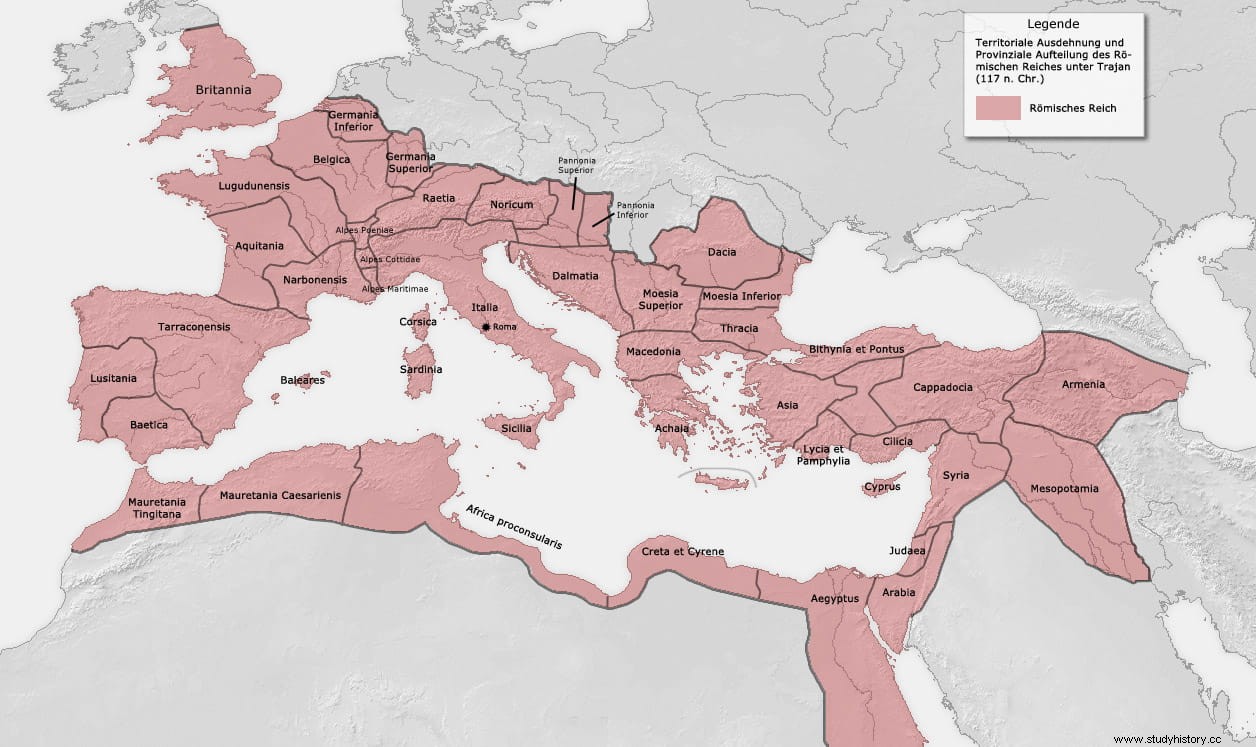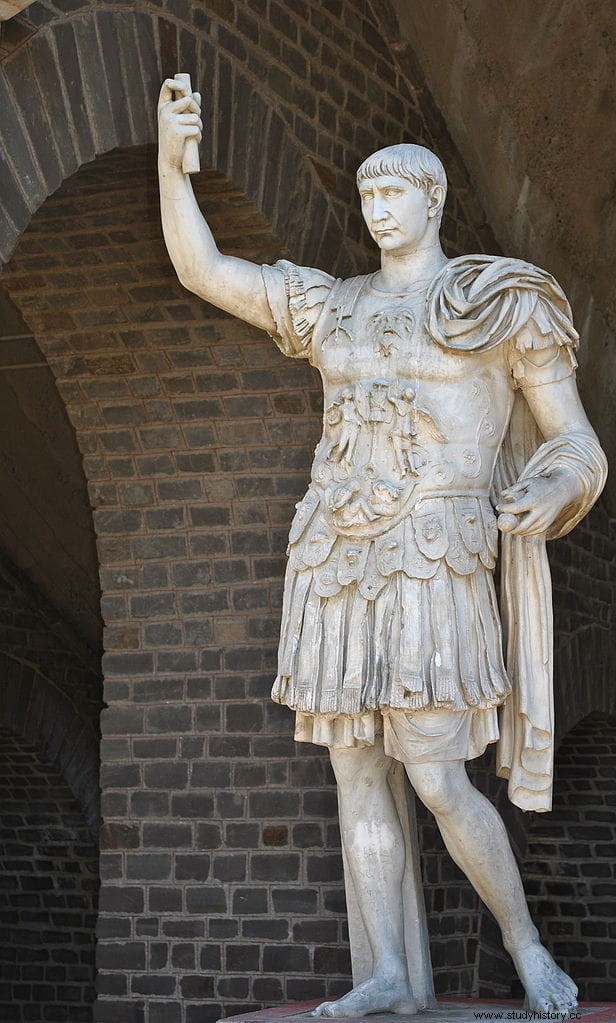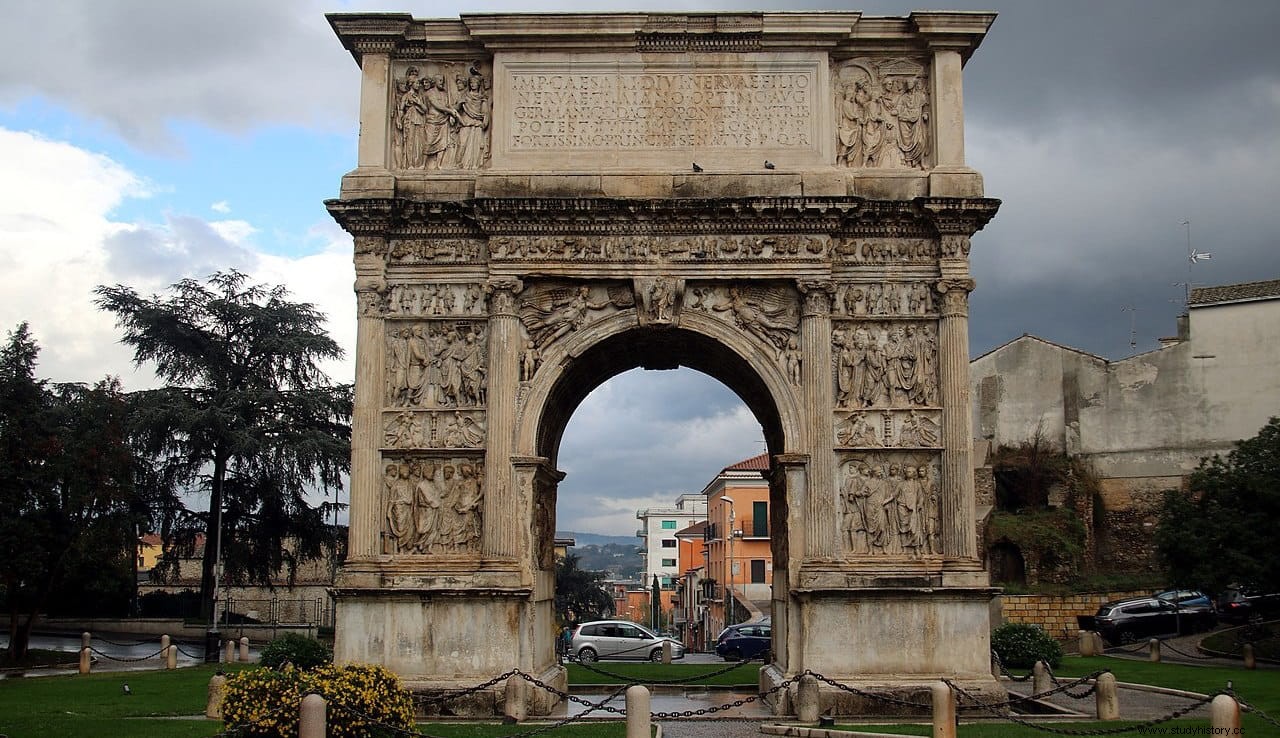Who was going to tell Quintus Flavius Postumius Quietus that he would go down in history and, eighteen centuries after his death, his name would continue to be remembered. He was a simple prefect and probably no one would remember him if it weren't for the fact that he was the last Roman official to be in charge of the Institutio alimentary or Feed , a program created by Emperor Trajan that, as his name indicates, subsidized food and education for poor children.
We are not going to talk about Quinto, of course, but about Alimenta . He did not come from nowhere, as he relied on an administrative body called Cura annonae , usually simplified to annona , a term derived from the eponymous goddess of the harvest and grain supply to Rome (hence her iconography shows her carrying a cornucopia and with a ship's prow behind her, often in the company of Ceres), but that was also applied to the corresponding tax, consisting of a spill collected in kind from landowners.
The annona It was born when the Roman Republic began to expand beyond the Italian peninsula and it became necessary to create a food trade and transport system.

Something that increased as the population grew and depended more and more on the importation of cereals from Egypt, Sicily and North Africa in general, while a part had to be re-sent to colonized areas, for example from Corsica and Sardinia.
Originally the Cura annonae it was directed by the aediles, but in the time of Augustus, as we have seen, it passed into the hands of the prefect and a specific type was even instituted, the praefectus annonae , magistracy that was incorporated into the cursus honorum . The system worked until the 3rd century AD, when Aurelian abolished all magistracies related to the matter and reformed the Cura annonae to substitute the distribution of grain for that of other products, such as bread, salt and meat, in addition to subsidizing the prices of wine and oil.

The progressive demographic decline experienced by Rome since then made the Cura annonae lose importance. , although it was still maintained for three more centuries thanks to the fact that the Ostrogothic king Theodoric restored it - or perhaps it had not disappeared and was limited to giving it a new impetus - when he conquered the city. In the Eastern Roman Empire it came to an end after the fall of Egypt into Sassanid hands, already in the 7th century AD
Let us now go back to the period of Trajan, who in the year 98 A.D. he succeeded his adoptive father, Nerva, on the throne, being very well received by the Senate despite the fact that he was the first emperor not born in Italy (he was born in Hispania).
Trajan decided to continue the expansionist policy of Domitian, taking advantage of the fact that the Dacian Decebalus had not respected the agreed peace conditions, and the legions crossed the Danube initiating what was to become two bloody wars:the first between the years 101 and 102; the second, from 105 to 106.

Although the final victory went to Rome, which more than covered the war costs thanks to the rich gold mines in the region and the sale of most of the Dacians as slaves, along the way many orphans of legionnaires were doomed to poverty. That was one of the reasons that are usually given to explain why the emperor ordered the implementation of the Institutio alimentary in the year 114. In fact, the loot obtained served to pay for the initial items, although later it was changed to a tax and donation system that we will see later.

However, not all historians believe that it was due solely to a concern for the underprivileged classes. And when we say historians, we also refer to those of the time, since Pliny the Elder himself He put on record that the real reason would have been to promote the birth rate, saying that the beneficiaries of the program came from the barracks and the tribes. That is, not only the children of deceased soldiers.
Promoting the Romans to have more children was not a new policy. It had been established by Augustus in 23 BC, through his Lex Iulia de maritandis ordinibus , which encouraged marriage and procreation with the aim of increasing the number of upper-class citizens. To do this, it offered economic incentives (for example, to marriages that exceeded three offspring), while penalizing those who remained celibate and young widows who refused to accept the games by not being able to attend the games or receive inheritances. a new husband.
Now, things had changed a lot since the Augustan era. On the one hand, the empire was no longer limited to the city or the Italian peninsula, but extended to almost all of Europe, North Africa and the Middle East; on the other hand, power was concentrated in the president, without there being a real counterweight in the Senate. Therefore, it is surprising to know that Feeds It was addressed exclusively to the Romans of Italy. What reason could there be for that exclusivity?

The various historians who have dealt with the subject deduce that what Trajan intended was to strengthen the political role of the original population center by improving its economic situation.
Some measures adopted separately seem to endorse this strategy, such as the obligation imposed on senators that at least a third of their properties should be in Italian territory, even when the owner lived in the provinces, to strengthen the link with his homeland.
In other words, what began as a measure of Trajan's in aid of the poor after the Dacian Wars, which was even reflected in the gift of three congiaria (the congiarium it was a payment, either in cash or in kind, that was made to the entire town instead of just to the soldiers, like the donativum ), continuing an initiative of Nerva but multiplying it (the first time he gave 99 denarii per person, 24 more than his predecessor, but in the next two, one for each war, the figure shot up to 650), he then became a political instrument.

The Alimenta program it was successful, considering that it lasted a century and a half, even though, according to calculations, only a small number of potential candidates benefited (a study carried out in the city of Veleya, in Piacenza, reveals 10%) . Hadrian himself, Trajan's successor, continued it and, as we have seen, it continued until Aurelian put an end to it in 271 AD. At least with that format, since it is believed that his idea was to launch something similar but more extreme, hence his reform of the Cura annonae .
The financing of this format was based on the collection of interest at 5% (much lower than usual among individuals, which was around 12%) on the mortgage loans that were granted for their exploitation to large landowners; only to them, because they offered more guarantees of payment thanks to the obligatio praedorium , a registry of assets, and the mortgage of some of their estates, although it is not clear whether they had to agree voluntarily or compulsorily, as it is possible that many were reluctant to collaborate and the emperor had to exert some pressure on them.
The private exploitation of public lands in exchange for the payment of a tax called vectigal , aimed at disadvantaged children in this case, was not rare and existed since the monarchical stage. However, this variant is later and may have started from an idea of Nerva, who could not have developed it due to his short reign and Trajan picked up the baton. Like many coins, reliefs from the Arch of Trajan in Benevento show several settlers leading their offspring before a table, where the praefectus alimetorum he is directing the distribution of the payment to children by his subordinates, the quaestores alimentarum .

But the most important original document is the Tabula Alimentaria of Trajan, found in the eighteenth century in the aforementioned city of Veleya. It is a huge bronze plate that explains the procedure of the imperial loan, distinguishing two successive phases. The first, on the 72,000 sesterces collected by the consular legate Cayo Cornelio Galicano between the years 99 and 101; the second, much larger, over 1,044,000 gathered by T. Pomponio Basso, who had the same rank as the previous one, from 106 to 114.
The collection of interest on the state loan reported a total of 52,000 sesterces per year, which were distributed among 245 boys and 34 legitimate girls, plus one illegitimate boy and one girl. Of that total, 47,040 were given to boys, at a rate of 192 sesterces each per year (16 per month), while the remaining 4,896 were given to girls, which was equivalent to 144 sesterces per year (12 per month). Those amounts hardly allowed to defray a rather frugal diet, based on bread and oil; more in any case, than what the two illegitimates received, which amounted to 144 sesterces for him and 120 for her.
